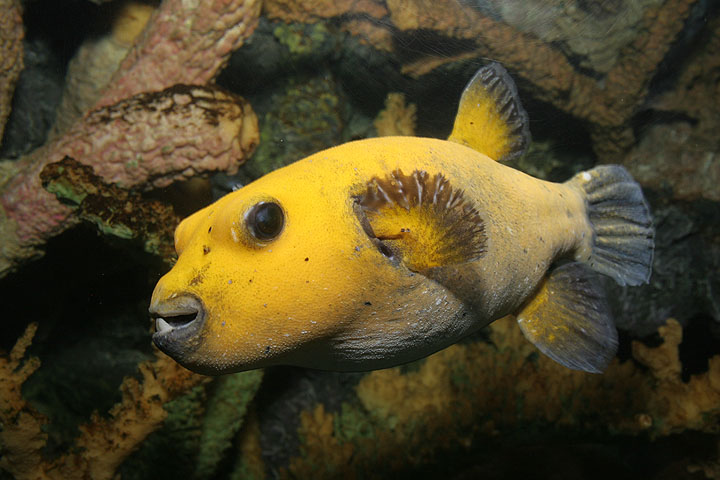Fish Houses
I stopped off for a breakfast-time visit to the National Aquarium (housed in the basement of the Commerce Department building, a few blocks east of the White House). It’s the oldest U.S. aquarium and for many years a fairly lame enterprise. But this fish house is in the final stages of what its administrators describe as an “extreme makeover.” And although the rehabbed 18,000-square-foot living museum won’t knock your socks off (no beluga whales, dolphin shows, or surround-your-path shark tanks), it does entertain. In fact, for a relatively small aquarium, its exhibits now pack a real quality punch.

So did the speakers who reintroduced local reporters and a few dignitaries to the revamped aquarium. We had oceanographer Sylvia Earle, former chief scientist of the National Oceanic and Atmospheric Administration, and Andy Dehart, the aquarium’s director of biological programs. A shark specialist, Dehart is also a consultant to the Discovery Channel for several programs that it’s developed for its renowned Shark Week series.
Earle lauded the existence of aquariums like this one as “half-way houses” that allow people and fish to get acquainted on their own terms. In these controlled settings, she notes that both scientists and the public get a chance “to see that fish have personalities — that they’re not all the same.”
While we were touring the facility, Earle volunteered an example of that. Her daughter, who volunteered at San Francisco’s Steinhart Aquarium, came to “have a way with a big grouper,” she said. “We called him Sydney — he was an Australian grouper.” This fish tended to hide out “and turn his back on almost everybody,” Earle recalls. Unless her daughter came by. Then he swam over and nuzzled her.
National Aquarium executive director Bob Ramin countered with an anecdote about a green sea turtle at the DC facility’s sister institution in Baltimore. This aquatic turtle “likes to be scratched like a dog.” In fact, when divers scratch its big shell, “he kind of wiggles” with apparent enjoyment, Ramin says. “It’s been so much fun to observe these personalities.” Some aquatic critters exhibit behaviors similar to land mammals — or distinct preferences for which humans they’ll welcome into their environment.
Aquariums can foster a strong appreciation for the watery world and its far-from-infinite resilience, Earle notes. And with a better understanding of the marine environment, humanity may finally shed its misconception that the oceans are so vast that they can be fished without limits. Or learn that this big tub can’t keep absorbing the terrestrial world’s wastes without impacts. Indeed, Earle argues, “the ocean is vulnerable” and “in trouble because of what we’ve done in the last half-century.”
The inhabitants of once abundant fisheries have been mined to near extinction and the top predators, such as sharks, she noted, continue to be killed in astounding numbers, with little regard to how this might perturb aquatic ecosystems.
Last year, 71 shark attacks on people were reported around the world, Dehart notes; only one was fatal. By contrast, he laments, when people assault sharks, nearly “every one of our attacks appears to be fatal.” And there are many. “We’re fishing 250,000 sharks every day,” he observes — or some 10,400 per hour. Not only is that not sustainable, he emphasizes, but its also allowing the whole food web to unravel with potentially catastrophic long-term impacts.
The new and improved National Aquarium in DC attempts to bring that message and plenty more home in its 66 new exhibits. The displays offer messages about the importance of marine sanctuaries (semi-protected areas) and reserves (no take zones); the threats posed by aquatic invaders, such as the lovely lionfish and somewhat less lovely snakeheads (with representatives of both species are on display); the imperiled status of amphibians; and the interconnectedness of ecosystems.
Science News subscribers have long bragged that the magazine’s brevity has allowed them to catch up on major developments in just an hour’s quick read. Well, I’d argue that this aquarium now allows visitors to view a broad range of charismatic species and digest issues pertaining to the aquatic world in just an hour’s quick stroll.
If you’re in DC, check it out. But better yet, Earle advises, if you can make it to the coasts or inland lakes, check out nature’s “big aquariums” — and get your feet wet.






